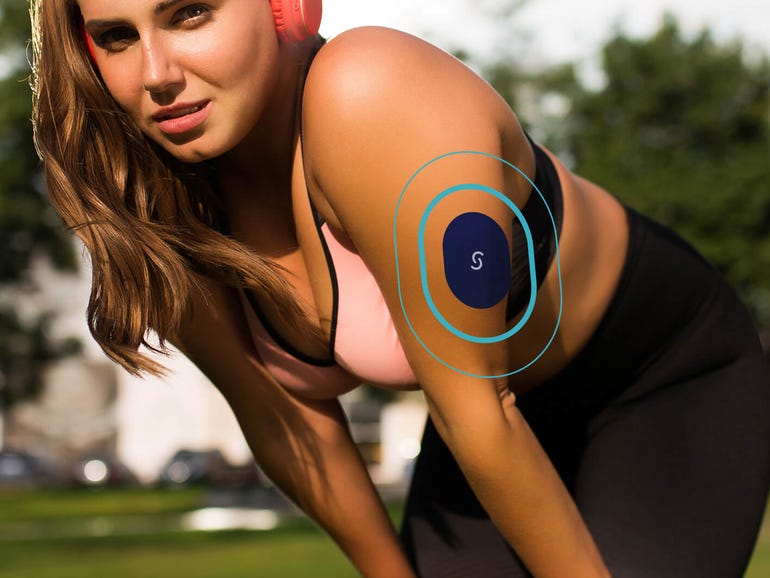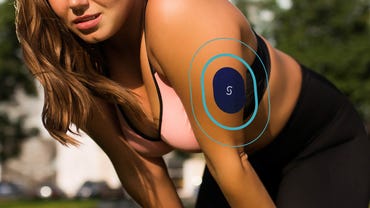The older I get, the harder it is for me to eat and drink as I used to without seeing some sort of impact on the scale. About 8 years ago, I signed up for Weight Watchers and about six months later had lost 40 pounds.
Fast forward a couple of years, and the lifestyle changes that every diet requires became old news and the weight returned. Then, last year, after hitting a personal high, I decided it was time to make drastic changes to my diet and physical activity. I signed up for Weight Watchers again, assuming that since it’d worked in the past it’d work again. My wife and I bought a Peloton Bike Plus, and I started eating healthier and working out nearly every single day.
It worked for the first few months, with the scale showing that I’d lost around 18 pounds. But then I stalled. Or my body stalled. No matter how healthy I ate, how many beers I skipped, and how long I spent sweating my butt off, my weight didn’t budge.
I tried everything I could think of. Switching up my meals, changing when and how I worked out or drinking even more water with no luck.
I gave up on Weight Watchers because, well, it wasn’t working anymore. I continued to work out (something I still do to this day) and figured that I’d just be content where my body obviously felt like it should be.
It was around that time when I received an email from Signos, a company that uses a continuous glucose monitor (CGM) — the same kind that diabetics use to constantly measure their blood sugar levels — and, along with a companion app, teaches you what food and exercise do to your blood sugar levels, and in turn, helps you lose weight.
Like
- A lot of insight into how your body works
- Easy to get up and going once you receive your kit
Don’t Like
- The program isn’t cheap
- Too much information can be a bad thing
After a few days of debating whether or not I wanted to have a monitor embedded into my arm for a month, I decided to take the Signos team up on the offer. I wanted more information about my body and why it wasn’t doing what I expected it to.
After filling out a health questionnaire that more or less wanted to confirm I’m not diabetic, I was able to finish signing up for the service, and about a week later a kit arrived at my home. Signos has three different plans for you to choose from, ranging from a single month up to six months of sensors and transmitters. The one month plan is $299. Three months will cost you $199 a month, and six months is currently priced at $149. In addition to getting a discount when you sign up for the longer subscriptions, you also get access to Signos in-app nutritionist.
Included in the single-month kit I received were three sensors, a transmitter, a glucose drink, and an instruction pamphlet. Each sensor lasts 10 days, so I had enough to monitor my glucose levels for a month.
The setup process consists of installing the Dexcom app and signing up for an account. Dexcom makes the sensors and transmitter, and that’s the app that syncs your glucose stats to your phone. Signos then takes the data from the Dexcom app and uses it to give you insights and apply its weight loss approach to the numbers. You’ll also need to install the Signos app, of course. But you won’t find it in the App Store. The only way to get the app right now is through Apple’s TestFlight beta service. Signos told me the company is still refining the experience and service and will officially list the app in the future.
The Dexcom applicator is in the plastic, while the transmitter is below it.
Jason Cipriani/ZDNet
Each sensor has two tiny wires — or microfilaments — that are implanted just below your skin using the applicator. The glue around each sensor is strong enough to keep it in place, even through showers and swimming sessions.
There was a little bit of pain when I first applied the sensor, as if someone pinched my arm, but after a few minutes I couldn’t feel anything other than a random device on my arm.
For the first few days, the app walks you through the basics of how the service works. You’re instructed to log your meals, any snacks, and any workouts. A couple of days in, I had to fast overnight and then drink a bottle of glucose, logging it in the app, and in turn, giving Signos a better idea of how my body reacted to a known amount of glucose.
There were other tasks I had to complete over the first week, including a measured fitness activity with varying levels or heart rate in order for Signos to estimate how much exercise I would need to lower my glucose level back into the acceptable range after eating.
Screenshots from the Signos app.
Screenshots by Jason Cipriani/ZDNet
My personal weight loss glucose range, according to Signos, is under 117mg/dL. It’s not that you have to keep your glucose level under that number for the entire day, but you want to limit the amount of time you spend over that number. At the end of the day, you can view the percentage of the day you stayed under your goal. There are two main approaches to doing just that.
The first is by eating food low in sugar and carbohydrates. The second is by going for a walk or doing some sort of physical activity shortly after eating. The amount of time depends on what you’re eating and how your body has historically responded to that particular food. For example, my usual lunch of a PB&J sandwich, oranges and applesauce would cause my glucose to spike above my personal threshold, while a turkey sandwich with bell peppers wouldn’t.
Signos would suggest I go on a 20–30 minute walk within around 15 minutes of finishing my meal. It’s not a perfect science, sometimes my glucose would spike after I got back from my walk, while on days when I couldn’t walk it wouldn’t spike even though I was eating the same exact meal. For instance, brown rice is supposed to be much better for you than white rice. However, my glucose levels would spike higher after I ate brown rice than they did when I ate white rice in the same exact meal. Weird, right? Even weirder? Some nights a beer would actually lower my glucose level instead of raising it.
Near the end of my first month, I had lost a couple of pounds and started to see some movement. But, other than taking an extra walk or two during the day, I hadn’t changed any of my eating habits or exercise routine.
Signos plans on eventually integrating what amounts to a personalized eating guide from a nutritionist, but in lieu of waiting for the feature to roll out, I met with the company’s nutritionist who asked me a ton of questions about my diet, how much time I had to make meals during the week, and for any foods I like or dislike.
I’ve never wanted to meet with a nutritionist because, well, I’m a picky eater. I don’t eat much fruit, and even fewer vegetables. But after an hour-long meeting, I was convinced to give a personalized nutrition plan a chance.
The plan includes many different recipes and suggestions, most of which are high in healthy protein, low in sugar and carbs, and very closely resemble your typical keto diet.
I’ve tried almost everything in the plan I was sent, and some of it has stuck, while items like brussels sprouts won’t make their way on my plate again in the future. Over the final 10 days, I followed the plan and Signos app recommendations as closely as possible (save for a beer here and there), and my glucose levels started spiking less often, which translated to showing a lower weight on the scale.
During a routine appointment with my family doctor, I asked for some thoughts about wearing a CGM and following a Keto-like diet. His thoughts about the monitor mirrored mine — is it good to have so much data about our bodies? I felt myself feeling stressed or anxious after I ate something, waiting for the app to alert me my glucose was spiking. Fun fact — enough stress can actually cause your glucose levels to rise, as well. He also cautioned me from going all-in on a diet that’s light on sugar and carbs, and instead to take a more balanced approach. Which is something Signos seems to echo as well.
I learned a lot about my body and how it reacts, and that’s information I can and do still use on a daily basis even if I don’t have an app yelling at me. Since I stopped wearing the Signos and getting insight, I’ve stuck to a healthier diet and routine exercise. And if it hadn’t been for a couple of weeks of traveling and eating while on the road (I think most of us can relate to this), I would have ended my trial with Signos at my lowest weight since trying to become healthier last year.
After wearing a CGM for roughly forty days total, I’m appreciative of what I learned about myself, but am unsure about whether it’s worth the asking price. Actually, Signos has lowered its price since I originally agreed to test it out. When I agreed, a single month was $399 — which has a higher mental hurdle to get over than the $299 price it is now. If I had more than a dozen pounds I’m trying to shed or if it was imperative for my overall health that I lose weight, I’d consider signing up for the three-month plan and fully dedicating myself to using all of the information to its full potential. That said, I can see there’s a certain appeal to having a window into how your body works, and advice about how to leverage that information to become healthier.
For all the latest Technology News Click Here
For the latest news and updates, follow us on Google News.


